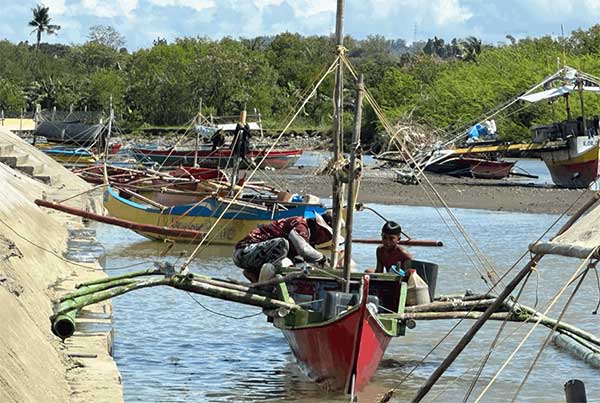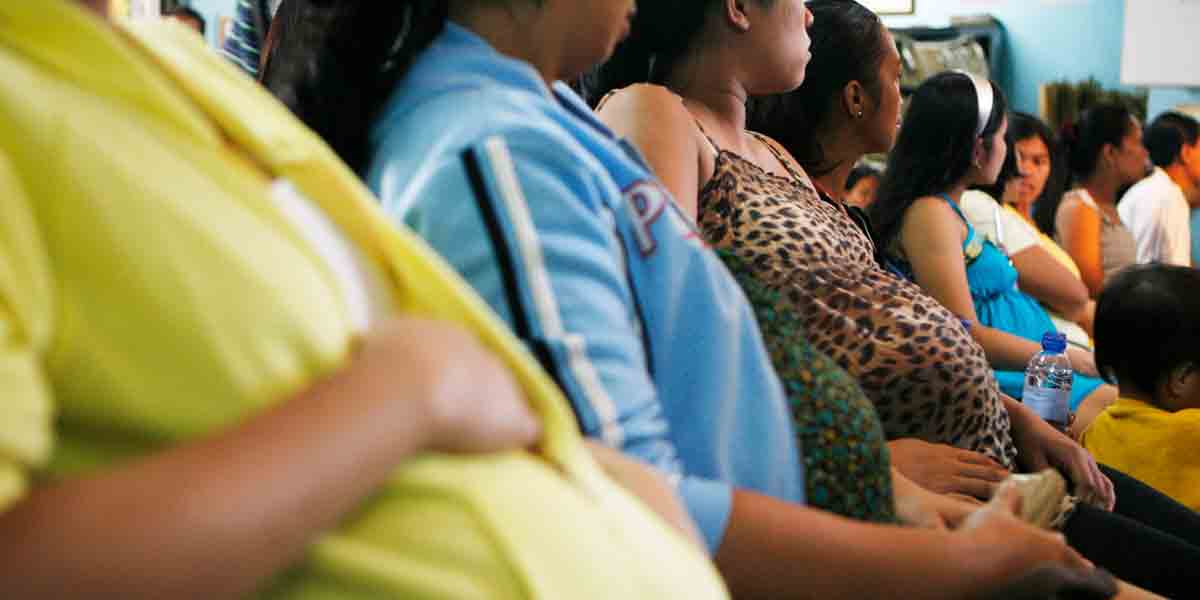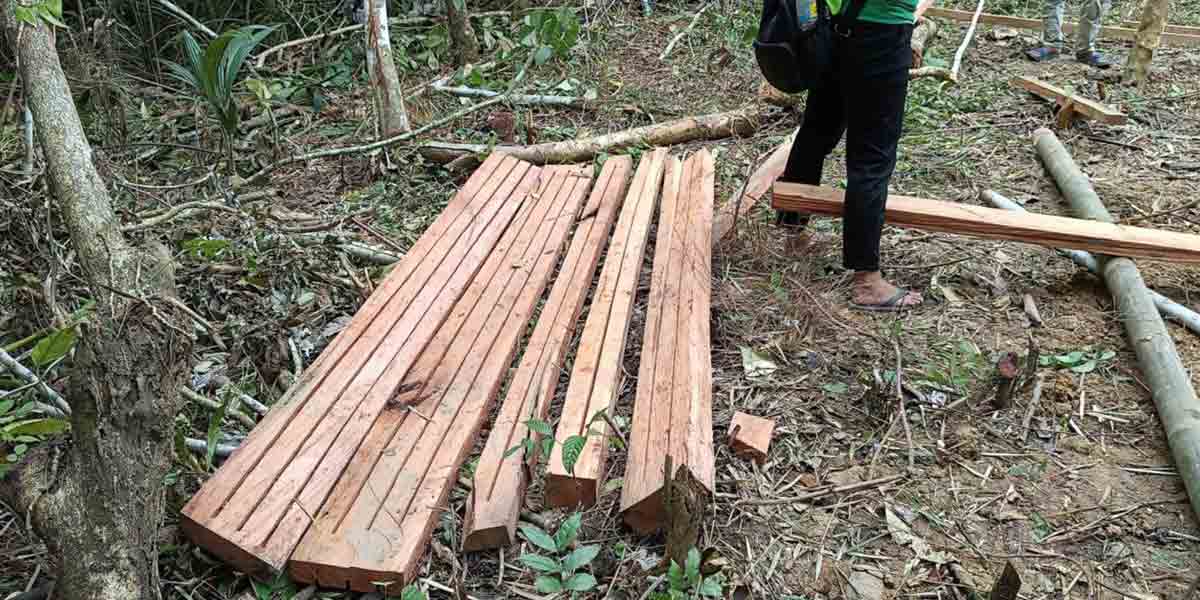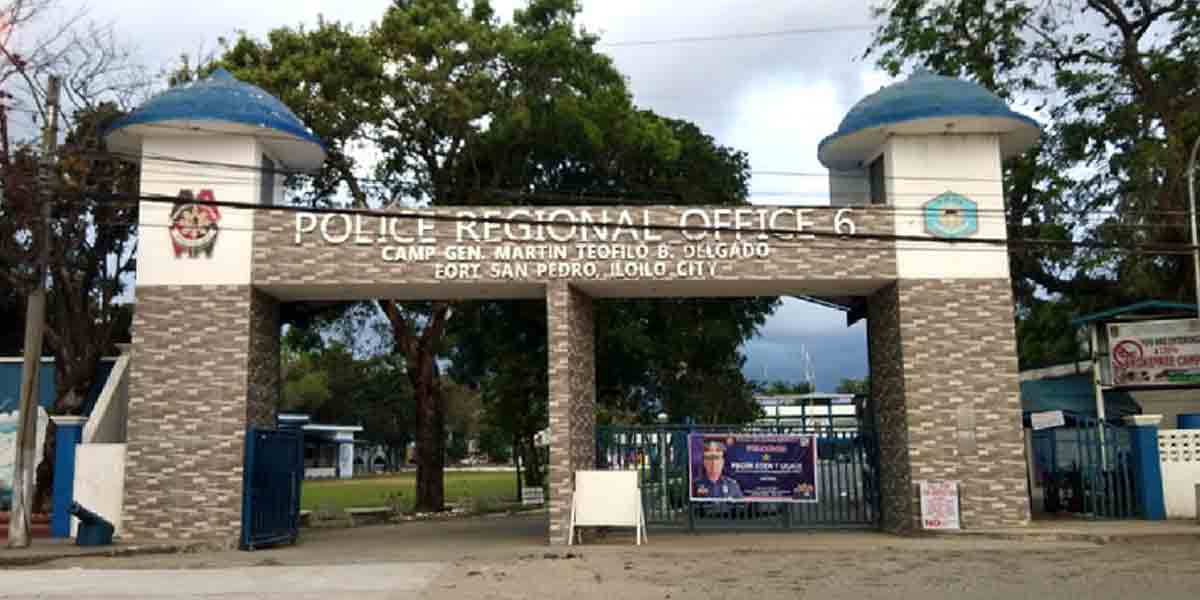
By Kris Catherine Bautista and Aleona Louise Gardose
As typhoons continued to strike the region, concerns grew over coastal barangays involved in the seawall construction project in Miagao, Iloilo.
The damaged portion of the seawall in Brgy. Baybay Norte, caused by Typhoon Kristine, followed a week later by Typhoon Leon severely flooding Brgy. Sapa, reopened discussions about the project.
BEHIND THE WALL
The “Construction of Miagao Shoreline Protection/Seawall including Access Road leading to UNESCO World Heritage Church, Miagao, Iloilo” is a nationally-funded project, holding the Department of Public Works and Highways (DPWH) – Iloilo 1st District Engineering Office responsible for its implementation.
Engr. Damiano Nique, Administrative Officer V from the Department of Public Work and Highways, shared that among the reasons that pushed for the construction of the shoreline protection was to mitigate the damage of waves scouring the shorelines during typhoons.
“It’s natural that when there’s a development project, there will always be a disadvantage. But we’ll weigh between what’s more important, and we’ll choose from there,” he said.
Recognized as a national project, Engineer Rey Mosura from the Municipal Engineering Office 1 of Miagao asserted that their office submitted to the authority of DPWH over the said construction.
Engr. Mosura clarified that their work in the Local Government Unit (LGU) of Miagao includes partly monitoring the implementation, while the DPWH performs the major monitoring activity of the project.
Consequently, with the cracked segment of the seawall discovered on October 24 left by the onslaught of Typhoon Kristine, Engr. Mosura shared his contribution on behalf of the LGU in addressing the issue.
“I called up the engineer assigned from DPWH, even wrote a letter, showing the extent [of the] damage on the seawall. So, we took our part, [taking] action to call their attention [regarding] the damage incurred by the typhoon, and it’s up to them how soon they will take action,” he said.
According to Engr. Nique, their request helped the quick response from the district engineer to survey the affected areas after the flooding.
“We are grateful to the barangay leaders of Sapa who came all the way here to ask for assistance and brought resolutions on how to address the problem,” he shared.
Despite the rapid response from both government agencies, the weather proved to remain unpredictable in the past few days after Typhoon Kristine.
While the damage was still unresolved, a week later on November 1, Typhoon Leon had families residing in neighboring Brgy. Sapa experience the worst flooding in the area, with floodwaters reaching shoulder to neck level.
“Sa baynte katuig namon diri, amo man lang na natabo [na hanggang liog]. Kay kang ligad, dangat lang sa tuhod,” (“In our 20 years here, this is the first time [the flood reached our necks]. Before, it would only reach our knees,”) recounted Sapa resident Alma Señora, reflecting on her 20 years of living in the barangay.
Ms. Zoila Fernandez from the Municipal Disaster and Risk Reduction Management (MDRRM) of Miagao stated that based on their rapid assessment for relief provision, approximately 85% of the population in Sapa, or around 120 out of 150 families, was affected by the flood.
“I was here sa DRRM for [around] 10 years, [and] we’ve never experienced this [level of flooding],” Fernandez added.
Fernandez attributed the flood incident to the contractor, noting that the box culvert was designed to allow water to flow beneath the access road. However, its size is vulnerable to obstruction by debris carried by water surges during heavy rain.
Engr. Mosura recalled responding to the requests to check the site during the flooding, wherein he learned that there had been a blockage to the culvert based on his interview with the residents.
He added that a water tank owned by the contractor, who was working on the access road, had been swept away to block the flow of water.
“Indi man gid [heavy rain-induced flood] lang ang maka-cause sang amo to ka pagtaas sang tubig,” (“It wasn’t just [the heavy rain-induced flood] that caused the rise of water to that extent,”) Engr. Mosura highlighted.
Fernandez emphasized the importance of maintaining the drainage system, since accumulation near the drainage could lead to blockage in consideration to sudden water surges caused by climate change-induced heavy rainfall.
Engr. Nique stated that the incident was simply an oversight and dispatched the contractors themselves to clear up the blockage from the canal.
“Actually, during the time that the water tank fell, the contractors were the ones who cleaned it all up. They also had to remove the sand and debris from the box culvert,” Engr. Nique shared.
Engr. Nique added that while the blockage was an accident that led to further inspections from engineers in charge, they are aware of the struggles fisherfolk faced due to this development.

On one hand, Vice President Joseph Tecson of the Municipal Fisheries and Aquatic Resources Management Council (MFARMC) in Miagao acknowledged that the seawall provided residents relief with its protection.
“Ang lugar tuod gid man pinanami nila, ginbutangan nila seawall, [pero] paano ang mananagat? Paano ang mga gagmay na mangingisda?” (“The place is indeed beautiful now with the seawall, but what about the fishermen? What about the small-scale fishers?”) Tecson reiterated, considering the number of fishermen from the 22 coastal barangays in Miagao had decreased.
Baybay Norte Fisherfolk Association Leader Arcelie Luague estimated that only about 80 fishermen remain in her barangay, a noticeable decline attributed to the inconvenience of docking brought about by the seawall construction.
Luague shared the struggles whenever there are typhoons and big waves as they are left with much less area to dock their boats.
“May naguba, may nabali ang tarik kag nabuslot, nabunggoanay man ang mga boat, nagsumpakanay kay gamay lang ang space,” (“Some poles broke, some were damaged, and boats crashed into each other because of the limited space,”) Luague recalled the impacts from the recent typhoons.
“Amo na kilid sang [seawall] imo [bangka], amo na maguba kung may balod tapos may baha,” (“When the seawall and your boat are close together, the boat gets damaged whenever there are waves and flooding,”) observed Elizalde Tawani, a fisherman of 56 years from Brgy. Baybay Norte.
Luague shared that during a typhoon last year, eight boats were carried away due to a severe overflow from the dike. Four went missing since the others were found as far as Iloilo, though destroyed.
“Pila ka adlaw wala kapalawod kag panagat tapos amo to natabo na naguba ang bangka, di man kapanagat kay ang pumpboat guba,” (“Several days passed without being able to fish after our boats were damaged, and it’s difficult because our pump boats were ruined,”) Luague pointed out the recurring situation to affected fishermen.
“Pigado kay sa panagat lang sila gasalig,” (“It’s hard because they rely only on fishing,”) Tecson stressed how fishing in the coastal barangays had always been the residents’ primary source of income.
BEYOND THE COAST
For Engr. Nique, the plans for improving the shoreline protection project will still undergo major developments like adding more outlets and expanding the existing canals and culverts around the area.
“The planning division developed plans by surveying the area [after the typhoon]. The plans need to be meticulous–it takes time, but we take action. We won’t make the residents feel like they’re left behind,” he explained.
Engr. Mosura added that there is a warranty and defects liability period that shifts the accountability to the contractors.
The Implementing Rules and Regulations Part A (IRR-A) Section 62 enacted pursuant to Section 75 of Government Procurement Reform Act (R.A. 9184) requires a warranty to ensure the contractor assumes full responsibility for the infrastructure project from the start of construction until officially approved by the government, including a defects liability period that is effective a year from project completion until final acceptance by the government, during which the contractor must repair damages within 90 days of receiving a repair order from the head of the procuring entity, the DPWH in this case.
Amid the ongoing construction, Engr. Mosura said that a variation order can still be put in place to resolve issues surrounding the seawall construction as part of the project’s contingency plan to further refine the existing design.
“Halimbawa, ini nga part sang project, hindi mo na-implement, o wala madala sa design, but kinangalan sa site nga butang, so you can have a variation order to the contractor,” Engr. Mosura cited.
(“For example, if this part of the project could not be implemented or was not included in the design, but is necessary at the site, then you can have a variation order to the contractor.”)
Since DPWH is only the implementing agency, they also cannot be mobilized without the necessary budget for varying the designs.
Fernandez mentioned ways to offset the flash floods near coastal barangays by improving the existing drainage systems.
“Just like sa Uyungan River, yung sa overflow. Every time na may tropical depression, may backhoe doon na naka-standby to excavate the debris.”
(“Just like in Uyungan River, during an overflow. Every time there is a tropical depression, a backhoe is on standby there to excavate the debris.”)
Despite the aftermath, according to Engr. Mosura, it’s not too late to improve on things with regard to the affected areas.
“We can look at the situation there and assess and reassess,” he highlighted.
Kris Catherine Bautista and Aleona Louise Gardose are Third Year Communication and Media Studies students at the University of the Philippines Visayas.






















